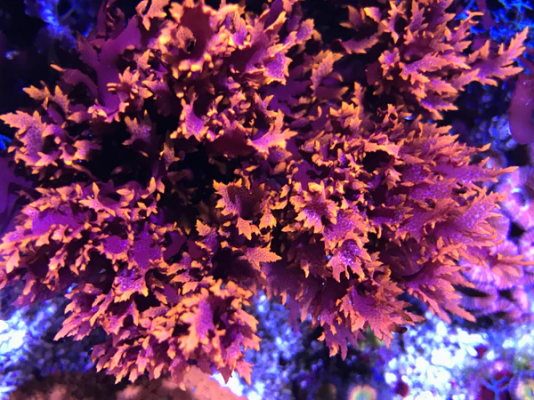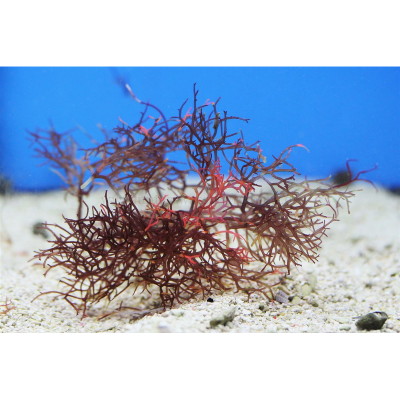When green and brown macroalgae begin to die, they turn pale/darkened in coloration (I assume the Fucoxanthin in brown macroalgae/Chlorophyll in green macroalgae that colors the algae is breaking down) before melting away. However, red macroalgae goes neon-orange and fluoresces under blue light before melting. Does the Phycoerythrin in the red algae just break down differently? Is something else at play?
Also, if red macroalgae does glow orange when dying, does this mean that the desirable coloration in Halymenia dilatata or dragon's breath (that is brought out under intense lighting) is the result of poor health? Does the dying tissue protect the rest of the algae like sunscreen? I am just so curious about this phenomenon!
Also, if red macroalgae does glow orange when dying, does this mean that the desirable coloration in Halymenia dilatata or dragon's breath (that is brought out under intense lighting) is the result of poor health? Does the dying tissue protect the rest of the algae like sunscreen? I am just so curious about this phenomenon!


















